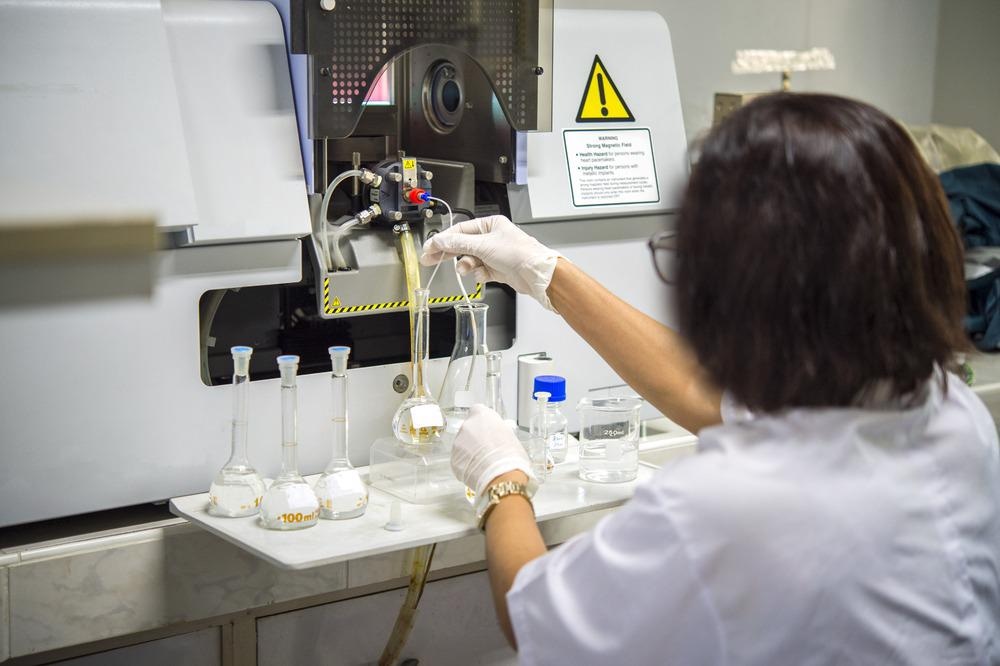Raman and infrared spectroscopy have long been workhorses of the analytical chemistry community for their ability to provide quantitative and qualitative information on molecular species and materials. These spectroscopies are also at the heart of many process analytical technologies (PATs) in several industries, including pharmaceutical and chemical manufacturing.1

Image Credit: Rabbitmindphoto/Shutterstock.com
PATs allow for real-time monitoring and control of chemical production processes. The spectroscopic techniques help identify the depletion or creation of chemical species during a reaction and, in turn, can be used to optimize process conditions as the reaction unfolds.
With improvements in both reactor design and instrument optimization, PATs have had a significant impact on the nature of chemical production in the pharmaceutical industry and the yields achievable and time taken to design reaction procedures and processes.
Spectroscopic Solutions
One of the challenges for PATs is that reaction mixtures are typically very chemically complex. Infrared and Raman spectroscopies are both sensitive to molecular vibrations but are highly complementary techniques due to their differing selection rules. This means that chemical groups that have weak infrared signals may give rise to intense Raman transitions and vice versa.2
Raman spectroscopy is frequently used for the identification of biomolecules but inherently suffers from weak signal levels due to the low cross-section of the required Raman scattering processes and competition with fluorescent background signals.2 However, it is a highly desirable technique as part of PAT systems due to its molecular specificity and ability to measure samples without the need for sample pre-treatment.
Another key advantage of Raman and infrared techniques is that they can be used for ‘online’ as well as ‘offline’ analysis. While techniques such as gas and liquid chromatography boast excellent sensitivities and chemical identification power, particularly with the development of more complex hyphenated approaches, these methods are inherently slow, cumbersome and require sampling of reaction mixtures for offline analysis.
With sufficiently high sensitivity detectors, good throughput, and reliable light sources, Raman and infrared spectra can be recorded in minutes. This means they can be integrated into PAT platforms for live chemical reactions.
Now, developers SCHOTT2, Infors3, and tec54 have come together to design a new integrated platform that combines infrared and Raman spectroscopy with a bioreactor and probe system. The new platform has been designed for biomedical analysis in conjunction with PAT capabilities.
A New Platform for Biomedical Analysis
The new platform draws together the strengths of the three companies to create a unique device for biomedical analyses. Tec5 are leading experts in process control spectroscopies and have a range of spectrometers available for performing Raman, infrared, and UV-vis measurements compatible with PAT configurations.4
SCHOTT, experts in glass manufacture and technology development, have contributed the hermetically sealed ViewPoint, made from sapphire to allow for the spectroscopic monitoring of the reactions.2 Particularly important for biomedical analysis applications, all parts are sterile and can be easily cleaned using steam-in-place or gamma-radiation as necessary.
The bioreactor in the platform is the Infors Minifors 2 reaction vessel and Infors have contributed the eve bioprocessing software.3 This software allows users to centralize all the data generated in a single location and use as part of process control cycles. Where chemometric analysis may be desirable, the system has been designed to produce data in formations compatible with established software solutions for multivariate data analysis.
Flexible Measurements
While the platform features Raman instrumentation, it is compatible with a variety of spectrometer probes. As these have quick-release fittings, they can easily be exchanged.
The sapphire windows used for the ViewPort also have excellent transparency across the infrared and visible wavelength regions, meaning that other types of spectroscopic probes, including infrared and UV-visible spectroscopy, can easily be used.
The device design has been made for seamless compatibility between the PAT components from all three companies. For larger-scale reactions, the Minifors 2 is available in three total volume sizes up to 6 L with a good number of ports and lines for the introduction of any gases for atmospheric control, pumps, and sensors.
The platform allows for real-time process control and optimization of even complex reactions. For pharmaceutical manufacturing, the device has been designed with pharma best practices in mind and so is straightforward to use for areas where more stringent regulatory compliance is required.
Tested Solutions
As the pharmaceutical industry moves from batch fed to continuous processing approaches for the creation of new chemicals, there is a growing need for PAT to evolve alongside synthesis practices. Good PAT support for reactions can reduce wastage with reagents added only in required amounts as well as providing early warning and interventions for problematic processing.
Raman spectroscopy has proved a powerful tool as part of PAT systems for pharmaceutical manufacturing6 and this all-in-one commercial platform will make it significantly more straightforward to implement such systems in the laboratory.
References and Further Reading
- Bakeev, K. A. (Ed.). (2010). Process analytical technology: spectroscopic tools and implementation strategies for the chemical and pharmaceutical industries. John Wiley & Sons.
- SCHOTT (2021) SCHOTT, https://www.schott.com/en-gb, accessed 20 April 2021
- Infors (2021) Infors, https://www.infors-ht.com/en/, accessed 20 April 2021
- tec5USA (2021) tec5USA, https://www.tec5usa.com/, accessed 20 April 2021
- Larkin, P. Infrared and Raman Spectroscopy: Principles and Spectral Interpretation. (Elsevier, Waltham, 2011)
- Nagy, B., Farkas, A., Borbás, E., Vass, P., Nagy, Z. K., & Marosi, G. (2019). Raman Spectroscopy for Process Analytical Technologies of Pharmaceutical Secondary Manufacturing. AAPS PharmSciTech, 20(1). https://doi.org/10.1208/s12249-018-1201-2
Disclaimer: The views expressed here are those of the author expressed in their private capacity and do not necessarily represent the views of AZoM.com Limited T/A AZoNetwork the owner and operator of this website. This disclaimer forms part of the Terms and conditions of use of this website.